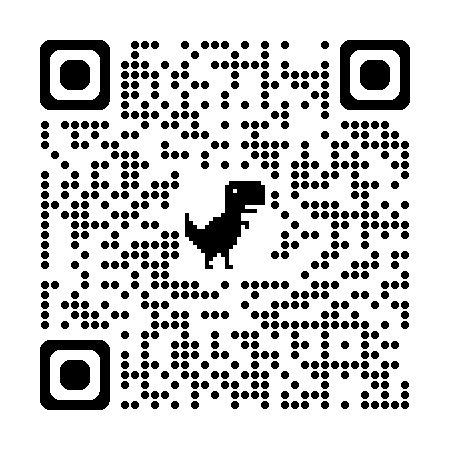Learning without understanding
Why academic under-achievement persist among students of fine and applied art in Nigeria
Abstract
Background: Academic achievement is one of the major goals and objectives of education. However, student underachievement is on the increase in Fine and Applied Arts.
Objective: The purpose of this study is to investigate the cause(s) of this prevalent academic underachievement.
Methodology: The study adopted a survey research design using a causal research technic. It involved a population of 263 students, lecturers, and studio technicians. The main instrument used to collect data for the study were two sets of structured questionnaires named the Students Achievement and Underachievement Test (SA&UT) and Teacher's Assessment and Teaching Approach Test (TA&TAT). Frequency count and percentages were used to analyze the data collected.
Result: The results of the analyses established that many students have faulty pre-level knowledge to be able to achieve effectively at the university level. Many of the lecturer’s exhibit negligence in conducting a valid assessment, and some need to improve their level of assessment literacy in assessing art. There is also a lack of adequate facilities to conduct reliable and valid practical-oriented assessments.
Conclusion: A combination of lack of facilities and teachers’ negligence contribute in the problem of under-achievement among students of find and applied arts.
Unique contribution: This study has deepened our understanding regarding why the problem of academic underachievement has continued to persist among students of fine and applied arts in Nigeria.
Key recommendation: Pre-level institutions should be upgraded and properly examined to adequately prepare students for the higher levels in their academic careers.
References
Adeleke, O. J., & Ariyo, O. S. (2018). Assessment of the pattern of SS1 student's pre-level mathematics cognitive and content achievement. African journal of theory and practice of educational assessment (AJTPEA), 6(2), 1-10.
Apken-Ade, P., & Itiav, J. V. (2018). Continuous assessment: A requisite for motivation and creativity in visual art education. African journal of theory and practice of educational assessment (AJTPEA), 6(2), 55-68.
Bransford, D. J., & Brown, L. A. (2000). How people learn: Brain, mind, experience, and school. National Academy Press.
Çakır, H. & Bichelmeyer, B A. (2016). Effects of teacher professional characteristics on student achievement: an investigation in blended learning environment with standards-based curriculum. Interactive Learning Environments, 24(1), 20–32. doi:10.1080/10494820.2013.817437
Fischer, E & Hänze, M. (2019). Back from “guide on the side” to “sage on the stage”? Effects of teacher-guided and student-activating teaching methods on student learning in higher education. International Journal of Educational Research, 95(), 26–35. doi:10.1016/j.ijer.2019.03.001
Garba, F., & Agba, E. (2018, June). Strategies for empowering education stakeholders through assessment in universities in Africa. African journal of theory and practice of educational assessment (AJTPEA), 6, 44-54.
Gorard, S., & Smith, E. (2003). What is 'Underachievement at School'? School Leadership and Management. Retrieved September 23, 2019, from http://www.gorard@cardiff.ac.uk
Hoffmann, J. (2020). Academic Underachievement and Delinquent Behavior. Youth & Society, 52 (5), 728-755.
Katz, J. (2015). Implementing the Three Block Model of Universal Design for Learning: effects on teachers' self-efficacy, stress, and job satisfaction in inclusive classrooms K-12. International Journal of Inclusive Education, 19(1), 1–20. doi:10.1080/13603116.2014.881569
Lebechukwu , R & Akpen-Ade, A. (2021). Assessing skill capability of artisans and craftsmen in Nsukka industrial market, Enugu State, Nigeria. Ianna Journal of Interdisciplinary Studies , 3(2), 26-35.
National Research Council. (2001). Knowing what students know: the science and design of educational assessment. National Academy Press.
Opateye, J. A. (2018). Gauging Chemistry teachers' assessment literacy and perceived skills for applying classroom assessment concepts in Southwest, Nigeria. African Journal of Theory and Practice of Educational Assessment (AFTPEA), 6, 29-43.
Paunesku, D.; Walton, G. M.; Romero, C.; Smith, E. N.; Yeager, D. S.; Dweck, C. S. (2015). Mind-Set Interventions Are a Scalable Treatment for Academic Underachievement. Psychological Science, 26(6), 784–793. doi:10.1177/0956797615571017
Renard, L. (2019, June 6). Yippy Index V. Blog. Retrieved July 7, 2019, from https://www.bookwidgets.com/blog
Saqr, M., Fors, U., & Tedre, M. (2017). How learning analytics can early predict under-achieving students in a blended medical education course. Medical Teacher, 39 (7), 757-767 .
St. Thomas University. (2018). St. Thomas University online master of science in education leadership program. Gardens, FL.
University of Nigeria Nsukka. (n.d.). Entry requirement for Fine and Applied Arts. Admission. Retrieved july 20, 2019, from www.unn.edu
Downloads
Published
How to Cite
Issue
Section
License
Copyright (c) 2022 Vershima Joseph Itiav, Peter Apkpen-Ade, Aondona Joshua Avav

This work is licensed under a Creative Commons Attribution-NonCommercial-ShareAlike 4.0 International License.



